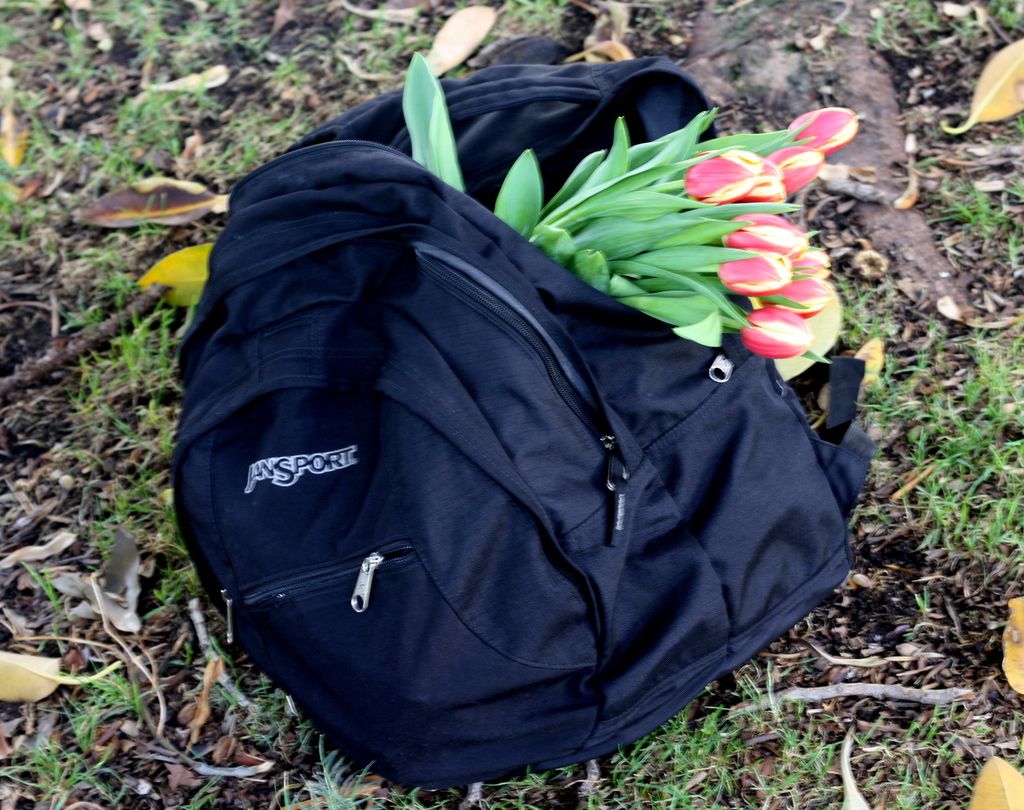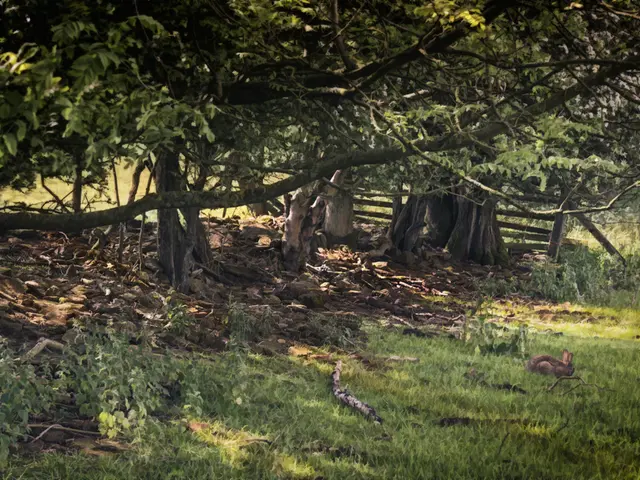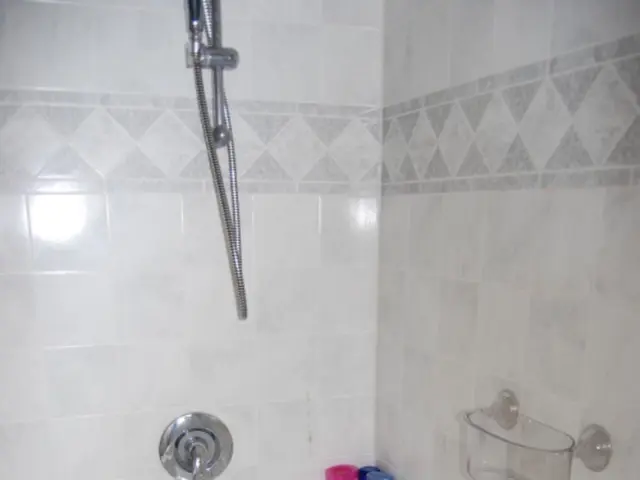Advantages and Disadvantages of Lasagna Gardening: An Impartial Assessment
Rebel Gardener's Guide: Go Green, Go Dirty - Lasagna Gardening
Hey, green thumbs! Meet Glen, our resident gardening guru with over a decade of dirt under his nails. When he's not transforming backyards into oasis paradises, he's sharing his tricks of the trade here. Latest posts by our resident gardening rebel (see all):
- The Gardener's Revolt: Garden Fungicides – Say Goodbye to Disease-Ridden Plants - June 9, 2025
- Crave the Heat: When to Pick Candy Cane Peppers - Your Spicy Guide - June 9, 2025
- Where Sweetness Awaits: When to Pick My Watermelon - A Gardener's Guide - June 9, 2025
As a champion of all things green, I've been experimenting with various ways to make my backyard blossom, balancing efficiency with Mother Nature. One revolutionary technique I've discovered is lasagna gardening. This eco-friendly approach ditches the traditional tilling process and instead relies on layered organic materials to create a nutrient-rich paradise. Let's delve into the dirty details!
Lasagna gardening is like a culinary marvel, but instead of delicious flavors, it layers organic materials – creating an environment where decomposition occurs naturally. At the bottom, you'll find carbon-rich "brown materials," such as leaves and shredded newspaper, which are topped with nitrogen-rich "green materials" like food scraps and grass clippings. Decomposing layers become a nutrient haven for plants growing above. Get ready to ditch your garden fork and trowels, as this method simplifies the planting process, enhances soil health over time, and makes manual labor a dwindling memory.
Unleash the Layers, Save the Planet!
It's crucial to understand that setting up a lasagna garden requires some upfront work. While there's no digging, you'll invest time collecting and assembling the layers. Once established, though, the benefits are worth every second spent. The eco-friendly and sustainable aspects appeal to rebels like me who are conscious of our impact on the environment.
The Essentials of Lasagna Gardening
The Lasagna Layers
Lasagna gardening is a method that aims to create rich, organic soil without the need for conventional tilling. It is a form of sheet composting, allowing organic materials to decompose in place, creating a fertile bed for planting.
Laying Down the Law (Literally)
Imagine a recipe where you're balancing flavors to create a delectable meal, and lasagna gardening is just that – except instead of spices and herbs, we're using organic materials to create an ideal soil environment. This gardening technique involves alternating "green" (nitrogen-rich) and "brown" (carbon-rich) layers, mimicking the natural decomposition process found in forest floors.
The Material You Need
Creating your lasagna garden requires readily available materials. Here's your shopping list:
Green Materials:
- Kitchen scraps (vegetable and fruit waste)
- Grass clippings
- Coffee grounds
- Weeds (not seeding)
- Manure
Brown Materials:
- Dry leaves
- Straw or hay (seed-free)
- Shredded newspaper or plain cardboard
Begin by laying down your cardboard or newspaper base, smothering weeds, and providing a foundation for the layers to come. Stack your green and brown materials in alternating layers, starting with browns and then adding greens on top. Finish with a layer of finished compost, creating a hospitable environment for planting immediately. Over time, these layers will decompose, creating a nutrient-rich soil that's ideal for growing a variety of plants.
The Perks and Pitfalls of Lasagna Gardening
In assessing lasagna gardening, it's essential to weigh its benefits and potential drawbacks. Ready to rebel against traditional gardening? Let's explore the advantages and potential challenges of this no-dig approach.
The Benefits of No-Dig Gardening
Lasagna gardening offers several advantages, particularly regarding ease of maintenance:
Caters to Nature's Needs: By layering nitrogen-rich materials like food scraps with carbon-rich layers like cardboard or newspaper, lasagna gardening fosters an environment where these substances break down. Over time, this natural process enriches the soil.
Suppresses Weeds: The layered format, with its opaque layers, blocks sunlight needed for weed growth, resulting in a notable decline in their proliferation.
Conserves Water: Garden beds retain water effectively, minimizing the need for frequent watering after the initial setup.
Potential Drawbacks
Drawbacks of lasagna gardening are relatively minor compared to its many benefits. Here are some considerations:
Time for Decomposition: Lasagna gardening demands patience, as the layered components may take time to break down and nourish the soil. impatience isn't a virtue in this rebel's garden.
Scarcity of Organic Material: Having sufficient organic material available can be a challenge, depending on the season and your location. Be prepared to recuse kitchen scraps and neighborly landscaping discards to fuel your revolution.
Pest Magnet: If not layered properly or managed well, the organic layers can attract pests, necessitating careful planning and vigilance to maintain your oasis.
Setting Up Your Lasagna Garden
Implementing lasagna gardening involves creating layered beds with organic materials that compost over time to create a nutrient-rich soil – replacing traditional digging and tilling methods.
Step by Step Guide
- Revolt Against the System: Choose a sunny spot in your yard, outlining the area for your lasagna garden, considering sunlight exposure and drainage.
- Lay Down the Base Lay Down the Law: Lay down cardboard or newspaper layers to smother weeds and grass, forming the bottom layer of your garden.
- Pile on the Layers: Add layers of organic materials, beginning with brown materials and finishing with green on top. Repeat, ensuring each layer is a few inches thick.
- Cap it Off: Finish the lasagna by adding a layer of finished compost or topsoil to facilitate seed germination.
- Moisten Your Revolution: Keep the layers moist to help them break down and kickstart the composting process.
- Plant and Wait: Plant seeds or seedlings directly into the top layer, allowing the layers beneath to supply nutrients as they decompose.
- Stay Patient Before Feasting: Allow time for the layers to fully decompose and transform into rich, nutrient-rich soil. This process can take several months.
Maintaining Your Lasagna Garden
Pamper Your Lasagna:
- Water regularly to keep the moisture levels up, as the decomposition process relies on dampness.
- Add mulch to minimize weeds and maintain moisture levels.
- Yearly, add more layers to replenish nutrients.
A Warning: Be patient, as lasagna gardening is a gradual process. Rushing the enrichment of your soil can jeopardize success.
Choosing Plants for Lasagna Gardening
Plant selection is crucial for a successful lasagna garden. Choose plants that thrive in the loose, nutrient-rich soil that this method creates. For instance:
- Vegetables: Lettuce, spinach, and radishes, which have shallow roots and thrive in the nutrient-rich layers, are ideal. Deeper-rooted vegetables like carrots or tomatoes might require a more established bed.
- Fruits: While berries like strawberries work well, fruits requiring trees or deep roots are ill-suited for lasagna beds.
- Flowers: Opt for annuals and perennials that add color and attract pollinators, such as marigolds, nasturtiums, and cosmos.
- Herbs: Basil, chives, mint, and various herbs flourish in lasagna beds with minimal care.
- Greens: Various types of kale and chard are also suitable.
With the right selection and patience, a lasagna garden can be a thriving oasis teeming with a diversity of plants – your own little rebellion against traditional gardening methods. Happy planting, rebels!
- Spruce up your home-and-garden lifestyle by adopting lasagna gardening – an eco-friendly approach that blends seamlessly into a home-and-garden revitalization program.
- Inspired by Glen, the Rebel Gardener, you can turn your backyard into a thriving lasagna garden paradise, bypassing traditional gardening techniques like tilling for a more sustainable and natural method.








